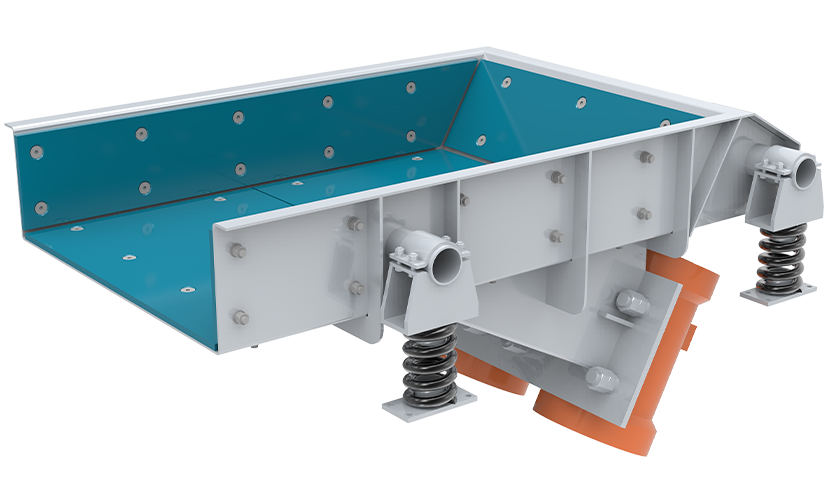Machinery Weight 55-72t
Max Feeding size(mm) ≤700mm
Hopper Volume(m³) /
In the realm of rock crushing and mineral processing, the efficiency and energy consumption of crushing equipment are critical factors that influence the overall cost and sustainability of operations. China Stationary Crusher, as a mainstay in the industry, is often compared with mobile crushers to determine which offers a more energy-efficient solution. This article delves into the energy consumption aspects of China Stationary Crusher in comparison with mobile counterparts, examining their operational dynamics and environmental impacts.

China Stationary Crusher, with its fixed installation, is designed to operate in a stable environment with a consistent power supply. This setup allows for a more streamlined energy usage pattern, as the crusher does not require additional power to move from site to site, which is a significant energy drain for mobile crushers. The stationary nature of China Stationary Crusher also means that it can be connected to a more reliable and often cheaper source of electricity, further reducing operational costs.
When comparing the energy consumption of China Stationary Crushers to mobile crushers, it's important to consider the variability in power requirements. Mobile crushers, due to their mobility, often rely on diesel generators or onboard batteries, which can be less efficient and more costly in terms of energy consumption. China Stationary Crusher, on the other hand, can take advantage of grid electricity, which is generally more stable and less expensive. This difference in energy sources can cause a significant reduction in the overall energy costs for China Stationary Crusher.
Moreover, the efficiency of China Stationary Crusher is not just limited to its energy consumption. The design of these crushers often incorporates advanced technologies that optimize the crushing process, reducing the amount of energy needed to achieve the desired output. For instance, modern China Stationary Crusher models are equipped with intelligent control systems that monitor and adjust the operation to ensure efficiency, which can cause a lower energy footprint.
However, it's also essential to consider the maintenance and downtime of the China Stationary Crusher. While stationary, these machines may require more frequent maintenance due to their continuous operation, which could potentially offset some of the energy savings. Nonetheless, the predictability of maintenance schedules and the ability to perform repairs without the need to move the equipment can balance out these concerns.
In contrast, mobile crushers, while offering the advantage of mobility, often suffer from higher energy consumption due to the need to power both the crushing process and the movement of the machine. This dual energy demand can make mobile crushers less energy-efficient than Chinese stationary Crushers, especially over extended periods of operation.
Environmental considerations also play a role in the energy consumption comparison. China Stationary Crusher, with its fixed location, can be more easily integrated with renewable energy sources, such as solar or wind power, which can further reduce its carbon footprint. Mobile crushers, due to their itinerant nature, may not have the same opportunity to leverage these sustainable energy options.
In conclusion, the energy consumption of China Stationary Crushers is generally lower than that of mobile crushers, thanks to their fixed location and ability to connect to a stable power source. Nevertheless, the choice of which type of crusher needs to be determined based on specific operational needs, geographical location, and energy costs. The low energy consumption of the China Stationary Crusher makes it ideal for long-term, large-scale operations, while mobile crushers may be more suitable for occasions that require flexibility and rapid deployment. As technology advances and the demand for sustainable operations increases, the energy efficiency advantages of China stationary crushers may become more obvious in the future.
Machinery Weight 53-62t
Max Feeding size(mm) ≤600mm
Hopper Volume(m³) 80-360t/h
Machinery Weight 55-57t
Max Feeding size(mm) ≤215mm
Hopper Volume(m³) /
Machinery Weight 33-35t
Max Feeding size(mm) 150-400t/h
Hopper Volume(m³) 2.5
Machinery Weight 33t
Max Feeding size(mm) 150-400t/h
Hopper Volume(m³) 7m³
Machinery Weight 54-63t
Max Feeding size(mm) ≤600mm
Hopper Volume(m³) /
Machinery Weight 9.5-75t
Max Feeding size(mm) ≤1000mm
Hopper Volume(m³) 61-1204t/h
Just let we know what you want, and we will get in touch with you as soon as possible!